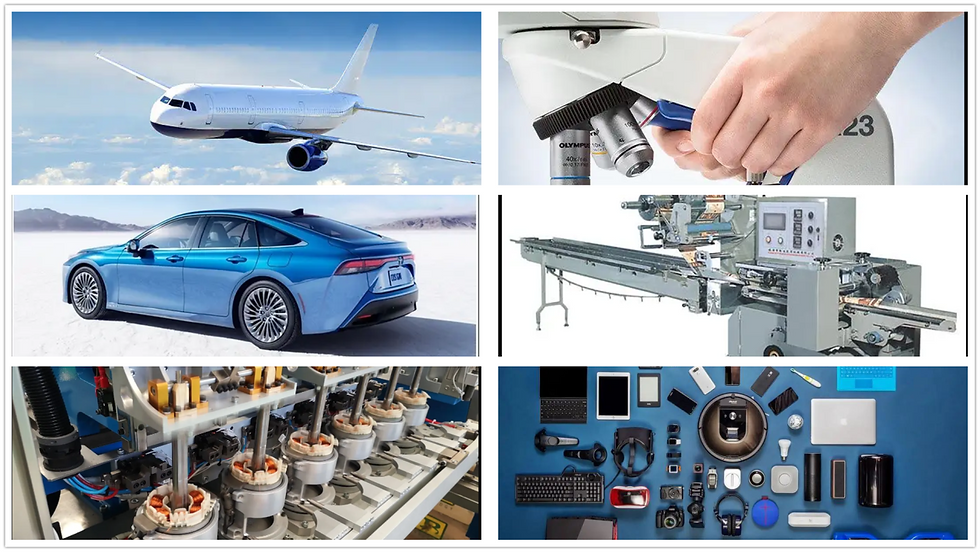Waterjet Cutting: The Ultimate Guide to Cold Cutting Technology
- shiva ganesh
- Jul 28
- 4 min read
Table Of Content
Introduction to Waterjet Cutting
What is Waterjet Cutting?

Waterjet Cutting is a highly versatile cold cutting process that uses a high-pressure stream of water, often mixed with an abrasive like garnet, to cut through a wide range of materials. Unlike thermal cutting methods, waterjet cutting produces no heat-affected zones (HAZ), making it ideal for materials sensitive to heat.
Waterjet cutting is popular in industries requiring precision, material integrity, and the ability to cut diverse materials, such as aerospace, automotive, defense, medical devices, architecture, and heavy industries.
A Brief History of Waterjet Cutting
Waterjet cutting technology emerged in the 1970s for soft materials and evolved in the 1980s with abrasive jets capable of cutting hard materials like steel, stone, and ceramics. Today, waterjet systems are crucial in advanced manufacturing and precision fabrication.
How Waterjet Cutting Works

The Basic Workflow
Design the part using CAD software.
Convert the design into machine-readable G-code via CAM software.
Load the material on the waterjet bed.
Pressurize water up to 60,000–90,000 psi using a hydraulic pump.
Inject abrasive material (if required) into the high-pressure water stream.
Cut the material following precise toolpaths.
Inspect the finished part for quality and accuracy.
Key Components of a Waterjet Cutter
High-Pressure Pump
Generates ultra-high-pressure water for cutting.
Cutting Head
Converts pressurized water into a precise, high-velocity stream through a ruby or diamond nozzle.
Abrasive Feeder
Introduces abrasive materials (typically garnet) for cutting harder substances.
Catcher Tank
Dampens the energy of the waterjet after cutting.
CNC Controller
Guides the cutting head along the programmed path with extreme accuracy.
Waterjet Cutting Processes

Pure Waterjet Cutting
Uses only high-pressure water. Ideal for soft materials:
Rubber
Foam
Plastics
Food
Abrasive Waterjet Cutting
Adds abrasive particles to the water stream for harder materials:
Metals
Stone
Ceramics
Composites
Glass
Materials Used in Waterjet Cutting

Common Materials
Metals
Steel, stainless steel, aluminum, titanium, brass, copper.
Non-Metals
Rubber, plastics, composites, ceramics, glass, wood, stone.
Special Materials
Foam, carbon fiber, laminates, granite, marble.
Applications of Waterjet Cutting

Aerospace
Precision components, turbine parts, structural panels.
Automotive
Chassis parts, interiors, gaskets, heat shields.
Architecture
Decorative panels, stone inlays, glass elements.
Medical Devices
Instruments, implants, prosthetic parts.
Defense
Armor plating, structural components, prototype parts.
Art and Design
Signage, sculptures, intricate patterns.
Advantages of Waterjet Cutting
No Heat-Affected Zone (HAZ)
Preserves material integrity and mechanical properties.
Versatility
Cuts virtually any material without tool changes.
Precision
Achieves tolerances of ±0.1mm to ±0.2mm, depending on thickness.
Complex Geometries
Handles intricate shapes and internal features.
Eco-Friendly
Uses water and natural abrasives; no hazardous fumes or dust.
Limitations of Waterjet Cutting
Slower than Thermal Cutting
Cutting speed is generally slower than laser or plasma for thin materials.
Operational Costs
Abrasives, water consumption, and pump maintenance add to costs.
Thickness Constraints
Excellent for thick materials but less efficient for extremely thin sheets compared to lasers.
Surface Finish
Produces a textured edge (striation lines) on thicker materials; may require secondary finishing.
Waterjet Cutting vs. Other Cutting Methods
Key Differences
Feature | Waterjet Cutting | Laser Cutting | Plasma Cutting | CNC Routing |
Heat Affected | None | Yes (HAZ) | Yes (HAZ) | Minimal |
Material Range | Almost any material | Metals, non-metals | Metals only | Non-metals, soft |
Precision | High (±0.1mm) | Very High (±0.05mm) | Moderate | Moderate |
Thickness | Very thick possible | Up to 20-25mm | Thick metals | Limited |
Cost | High (operation) | Moderate to High | Lower | Moderate |
When to Choose Waterjet Cutting
For materials sensitive to heat.
When cutting thick or composite materials.
For intricate designs on non-metals or exotic materials.
Future Trends in Waterjet Cutting
Higher Pressure Systems
Advancements toward 100,000 psi+ pumps for faster, more efficient cutting.
Automation Integration
Robotic arms and CNC automation for streamlined production lines.
Intelligent Software
AI-driven toolpath optimization and material management.
Hybrid Systems
Combining waterjet with other technologies for flexible manufacturing.
Cost Considerations
Machine Cost
Basic systems: ₹50 lakhs – ₹1 crore+
Advanced multi-axis systems: ₹1 crore – ₹3 crores+
Operational Costs
Abrasive garnet (consumable)
Water and energy usage
Pump maintenance and parts replacement
Part Cost
Higher than laser/plasma but justified for special materials and no-heat applications.
Choosing the Right Waterjet System
Based on Material
Pure water: Soft materials like rubber, foam.
Abrasive water: Hard materials like metals, stone.
Based on Application
Fine detail: 3-axis or 5-axis systems.
Large parts: Large-bed waterjet machines.
Volume Consideration
Best for low to medium production, prototypes, and custom work.
Tips for Getting Started with Waterjet Cutting

Optimize Design for Waterjet
Avoid sharp internal corners; use radiuses to extend nozzle life.
Understand Taper Compensation
Software helps reduce the natural taper of the waterjet cut.
Maintain Regularly
Clean nozzles, replace seals, and monitor pump performance.
Partner with Experts
Work with experienced service providers for critical projects.
Conclusion
Waterjet Cutting delivers unmatched versatility in modern manufacturing, capable of cutting virtually any material with high precision and no thermal impact. From aerospace components to architectural masterpieces, waterjet cutting enables creativity and accuracy without compromise.





Comments